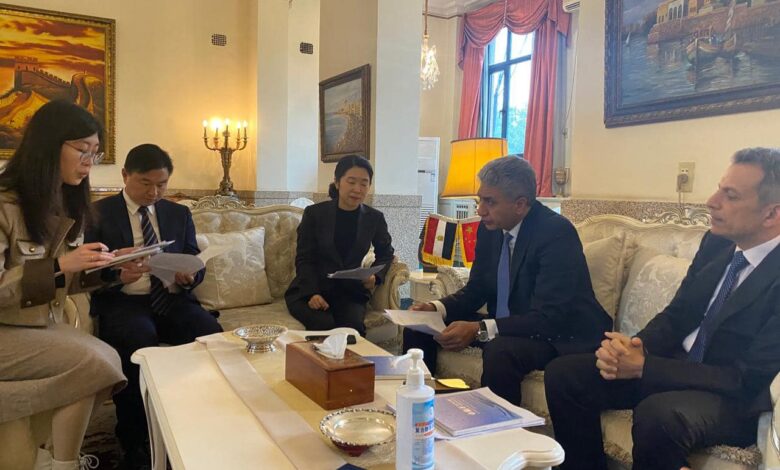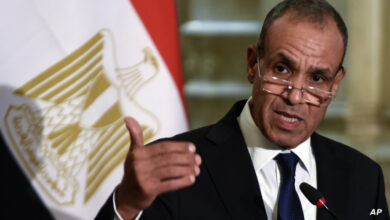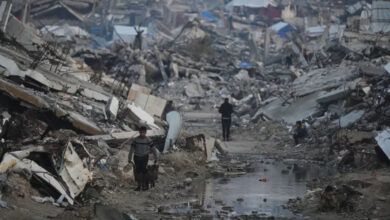
Egypt’s Minister of Tourism and Antiquities Sherif Fathy expressed his happiness towards the joint work being done with China in preserving world heritage, given Beijing’s extensive experience in preparing nominations and registering trans-boundary world heritage sites.
He stressed his full support and pledged to help overcome any obstacles that may face the joint registration process, especially in light of the great historical and scientific importance of the Rawda Island Nilometer and the Chinese Baiheliang inscriptions.
This came during a meeting held between Fathy and the Vice Chairman of the People’s Government of Fuling Province, Chongqing Municipality, and his accompanying delegation, during the Egyptian minister’s current official visit to the Chinese capital, Beijing.
The meeting discussed the proposal for a joint international nomination file between Egypt and China to register the Nilometer on Rawda Island in Cairo, and the Baiheliang inscriptions on the Yangtze River in China on the UNESCO World Heritage List.
These monuments are among the most important water architecture relics in the world, he said, and added that registering them on the UNESCO World Heritage List will contribute to protecting and managing ancient water data in Egypt and China.
He added that this will help preserve and spread information regarding ancient agricultural civilization and the technology of water hydraulic heritage within Asia and Africa, as they were included on the UNESCO tentative list of world cultural heritage.
Fathy added that this cooperation will contribute greatly to benefiting from international expertise in preserving, registering and protecting heritage.
It will also work to support the bonds of cooperation and friendship between the two countries, he said, and enhance the depth of Egyptian-Chinese strategic relations overall, especially regarding archaeological work.
Rawda Island Nilometer:

“Nilometers, as their name suggests, were used to measure flood levels so that dykes and canals could be prepared accordingly. Flood levels affected agricultural productivity, so another major purpose of Nilometers was to set taxation levels,” the official egymonuments website explains.
“Built on the order of the Abbasid Caliph al-Mutawakkil in 247AH/861 AD, the Nilometer on Rawda Island is one of the oldest in Egypt.”
“It is also the oldest structure built after the Arab conquest (20 AH/640 AD) that survives in its original form,” it explained.
“The annual seven-day celebration of the Nile flood, which took place from the medieval period down to the end of the nineteenth century, was attended by the sultan himself along with his senior officials.”
“The Rawda Island Nilometer consists of a marble octagonal column 19 cubits in length in the middle of a stone-lined well that is rectangular at the top, and circular at the bottom,” it reads.
“Qur’anic texts relating to water, vegetation, and prosperity are carved on the walls of the well, as are measuring marks on the column, which were used to determine the height of the flood as the water rose through the well. A stairway spirals down to the bottom.”
Baiheliang Inscriptions, China:

The Baiheliang Inscriptions are a natural stone series with a length of 1,600 meters and an average width of 15 meters, located by the Yangtze River north of Fuling County.
The stone series has 165 inscriptions dating back to 764 AD, showing the hydrological records of 72 years of drought over more than 1,200 years in the upper reaches of the Yangtze River.
The Baiheliang Inscriptions are considered amongst the “oldest hydrological station in the world” and were inscribed on the tentative list of World Heritage in 2008.
Edited translation from Al-Masry Al-Youm




